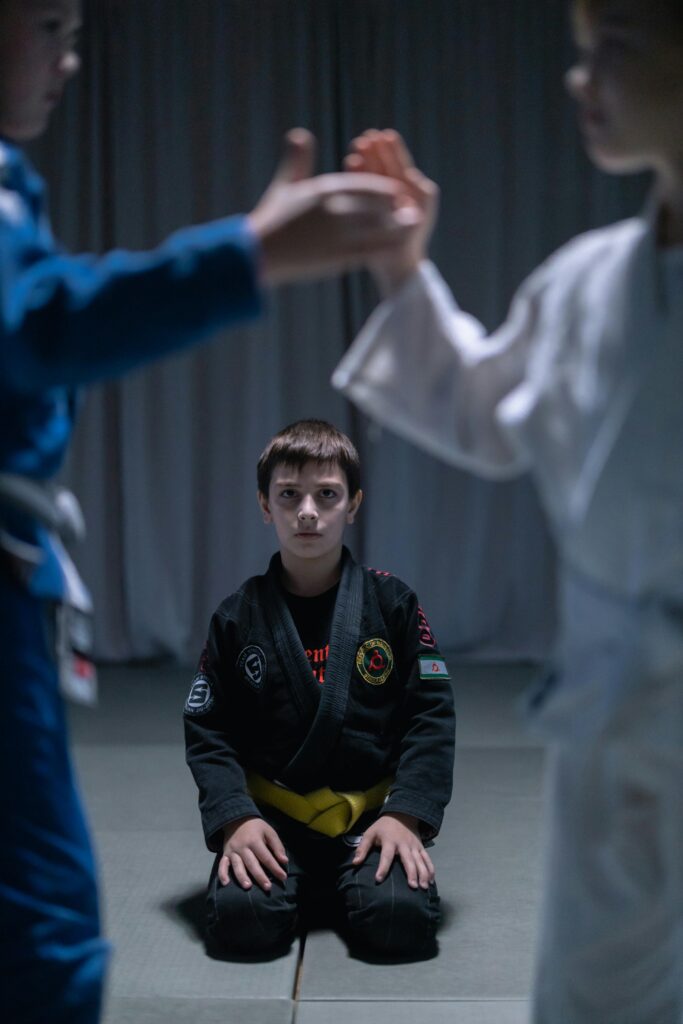Home should be where you feel safest, but intrusions can shatter that peace when you least expect it. Learning how to defend yourself from home invasion starts with simple steps that anyone can take, like upgrading locks, reinforcing doors, and using smart security systems.
These proactive measures can make all the difference in creating a safe space for your family.
At Eye2Eye Combat, we’ve seen how preparation and practical techniques empower people to feel confident and secure. Let’s explore strategies that turn your home into a fortress and make safety a natural part of your everyday life.
Assessing Vulnerabilities in Your Home
Every home has weak points, and burglars know exactly how to exploit them. They look for vulnerabilities that make breaking in quick and easy.
Your job is to think like an intruder and find those weaknesses before they do. It’s not just about having locks in place—it’s about ensuring every potential entry point is secure and deterrents are visible.
Common Entry Points Burglars Target
Most intruders prefer the easiest and quietest ways to get inside, so doors, windows, and garages are their first choices. Pay special attention to these:
Doors
Weak locks and hollow-core doors are no match for a determined burglar. Solid wood or metal doors paired with sturdy deadbolts are much harder to force open. Reinforce your door frames, too, since even a strong lock won’t help if the frame gives way.
Windows
Ground-level windows are often overlooked by homeowners but not by intruders. Sliding windows without locks are easy to pry open, and standard glass can be shattered in seconds. Security film or locking mechanisms can make a huge difference here.
Garages
Garages often have outdated locks or simple mechanisms that are easy to bypass. If you’re using your garage for entry, a secure garage door opener adds an essential layer of protection.
Conducting a DIY Home Security Audit
You don’t need to hire a professional to identify your home’s vulnerabilities. Take a walk around your property and think critically:
- Are your doors and windows securely locked at all times?
- Have you installed visible deterrents like cameras or security signs?
- Is there enough lighting outside to make your home look lived-in and uninviting to burglars?
Create a checklist to track areas needing improvement. Addressing even small issues, like fixing a loose window lock or installing motion lights, can significantly increase your safety.
Signs of a Potential Break-In to Look Out For
Intruders often scout their targets, leaving subtle clues behind. Scratches near locks, misplaced outdoor items, or new damage to doors or windows can indicate that someone has been testing your home’s defenses.
Don’t ignore these signs—stay alert and report anything suspicious to local authorities.
Securing Your Home with Technology
When it comes to home security, technology is your strongest ally. It doesn’t just help you respond to threats; it actively prevents them. Smart devices give you control and peace of mind, whether you’re home or away.
Choosing the Right Home Security System
A solid home security system is a game-changer. Choose one with the following features:
- 24/7 monitoring: Real-time alerts keep you informed no matter where you are.
- Motion-activated cameras: These capture clear footage when something moves in their range, helping you identify threats quickly.
- Mobile alerts: Receive notifications straight to your phone when something isn’t right.
- Loud alarms: A blaring sound is often enough to scare away intruders before they even step inside.
Many systems today are designed for easy installation. Even if you’re not tech-savvy, you can set them up without much hassle, giving you immediate security benefits.
Smart Locks and Entry Control Systems
Traditional keys are becoming a thing of the past. Smart locks let you control your doors remotely, ensuring you never forget to lock up.
These locks also offer features like temporary codes for guests, making it easy to grant access without giving out physical keys. Remote locking ensures you can secure your home with a tap on your phone, no matter where you are.
Lighting Solutions for Added Protection
Intruders prefer darkness, so make your property as well-lit as possible. Motion-activated lights are especially effective because they turn on the moment someone approaches, making it impossible for a burglar to move unnoticed.
Place them around all entry points, including less obvious areas like backyards or side alleys, to eliminate potential hiding spots.
Physical Barriers to Strengthen Your Defense
A sturdy physical barrier is often enough to make a burglar think twice about targeting your home. By reinforcing entry points and creating obstacles, you make it significantly harder for anyone to break in.
Reinforcing Doors and Windows
Your doors and windows are the first line of defense, so make them as strong as possible. Here are some upgrades to consider:
- Deadbolts and strike plates: A quality deadbolt paired with a reinforced strike plate makes it much harder for a door to be forced open.
- Window locks or security film: These prevent windows from being easily opened or shattered.
- Door jammers or reinforcements: These add extra strength to doors, keeping them securely in place even if someone tries to kick them in.
Small investments in these areas can make your home significantly more secure.
The Role of Fences and Gates
A strong fence does more than mark property boundaries—it’s a deterrent. A tall, sturdy fence with locked gates creates a psychological barrier for intruders, signaling that your home is difficult to access.
For even greater protection, consider adding thorny plants near the fence line to discourage climbing.
Affordable DIY Home Reinforcements
Home security doesn’t have to cost a fortune. Simple, affordable reinforcements can go a long way:
- Door stoppers or wedges: These inexpensive tools prevent doors from being opened, even if the lock is compromised.
- Sliding door bars: A basic bar or rod in the track of a sliding door can prevent it from being forced open.
- Peepholes or door viewers: These give you a clear view of who’s at the door before you open it, adding an extra layer of safety.
By addressing these areas, you create a home that’s not just secure but also sends a clear message to potential intruders: this is not the house to mess with.
Creating an Emergency Plan for Your Family
Even if your home is fortified with the best security measures, you should still prepare for worst-case scenarios. An emergency plan is like a roadmap for your family to follow in stressful situations, ensuring everyone knows exactly what to do when seconds count.
Establishing Safe Zones in Your Home
Pick a room in your home where your family can retreat if an intruder gets inside. This safe zone should be easy to reach and secure enough to keep you protected while help arrives. Equip this room with:
- A sturdy lock: Invest in a high-quality lock that can withstand force.
- A charged phone: Keep a spare phone in this space, ensuring you can call 911 even if your main phone isn’t accessible.
- Basic supplies: Water, flashlights, and a first-aid kit can make a critical difference during a prolonged emergency.
Practice getting to the safe zone quickly and without panicking. These rehearsals will make the process second nature during an actual event.
Communication Protocol During a Crisis
Everyone in your family needs to know their role in an emergency. Establish clear responsibilities so that chaos doesn’t take over:
- Who calls 911? Make sure at least one person is assigned this task.
- Who gathers the kids or pets? Someone should be responsible for ensuring no one gets left behind.
- What’s the signal to move to the safe zone? Whether it’s a specific word, sound, or gesture, this signal should be unmistakable.
Rehearse these roles together, so everyone feels confident in what they need to do. Clear communication can prevent confusion and save precious time.
Practicing Regular Safety Drills
Turn safety drills into a routine activity, much like fire drills at school or work. Simulate different scenarios, such as someone breaking in through a window or forcing open a door.
These drills help your family develop muscle memory, making their responses automatic under pressure. Repetition builds confidence and ensures everyone feels prepared rather than panicked.
Deterring Intruders Before They Act
Preventing an intrusion is far easier than dealing with one. The goal is to make your home appear so unappealing to burglars that they don’t even consider targeting it.
Leveraging Community Watch Programs
Neighborhood watch programs are one of the best ways to deter crime. When you and your neighbors look out for each other, you create an environment where intruders are less likely to take a chance.
Join an existing group or organize one if none exists in your area. Share contact information with trusted neighbors and agree to report suspicious activity immediately. A tight-knit community is a strong deterrent.
Visible Deterrents That Work
Sometimes, the smallest changes can make the biggest difference. Visible deterrents send a clear message to potential intruders that your home isn’t an easy target. For example:
- “Beware of Dog” signs: Even if you don’t have a dog, this sign can create uncertainty.
- Fake cameras or alarm decals: These inexpensive tools can give the impression of a well-secured home.
- A well-maintained yard: Keeping your property clean and cared for signals that someone is present and vigilant.
Intruders prefer homes that appear neglected or abandoned. These small efforts can discourage them from even approaching your property.
Behavioral Changes to Minimize Risk
Your daily habits play a crucial role in keeping your home secure. Don’t rely solely on gadgets and locks—how you act can either invite trouble or keep it at bay.
- Always lock your doors and windows: Even if you’re at home, securing entry points can prevent someone from sneaking in unnoticed.
- Close curtains at night: This simple step keeps valuables and family activities out of sight from prying eyes.
- Don’t leave expensive items visible: Keep things like bikes, tools, or electronics out of your yard or near windows where they can tempt intruders.
Small behavioral adjustments, combined with visible deterrents and a strong community presence, create a powerful defense against would-be intruders.
Take Control of Your Safety with Eye2Eye Combat
Your home should feel like the safest place on earth, and with the right precautions, it can be. From securing entry points to preparing emergency plans, each step brings you closer to peace of mind.
But why stop there? At Eye2Eye Combat, we don’t just teach you how to protect your space—we help you build confidence and real-world skills that last a lifetime.
Take the first step toward mastering self-defense by exploring our Bujutsu courses today. Your safety is priceless, and we’re here to help you protect it.
FAQs
What is the best defense for a home invasion?
The best defense is preparation. Secure all entry points with strong locks, reinforce doors and windows, and install a reliable security system with cameras and alarms. On a personal level, have an emergency plan for your family, practice safety drills, and consider learning basic self-defense techniques to boost confidence and readiness.
How do I scare off home invaders?
Visible deterrents work wonders. Motion-activated lights, security cameras, and alarm system signs make burglars think twice. Dogs, even small ones, can be effective too. Loud alarms or sounds can also scare them away, so ensure your security system is loud enough to be heard from outside.
How to stay safe from home invasion?
Start by locking all doors and windows, even when you’re home. Keep outdoor areas well-lit and clear of hiding spots like overgrown bushes. Establish safe zones in your home and rehearse emergency plans with your family. Having a charged phone nearby and knowing when to call for help are key steps to staying safe.
What is the best deterrent for home invasion?
A combination of visible deterrents is the most effective. Install security cameras, motion-sensor lights, and place “Beware of Dog” or alarm system signs around your property. Keeping your home well-maintained and occupied-looking—like leaving lights on timers—also sends a strong “stay away” message to potential intruders.





